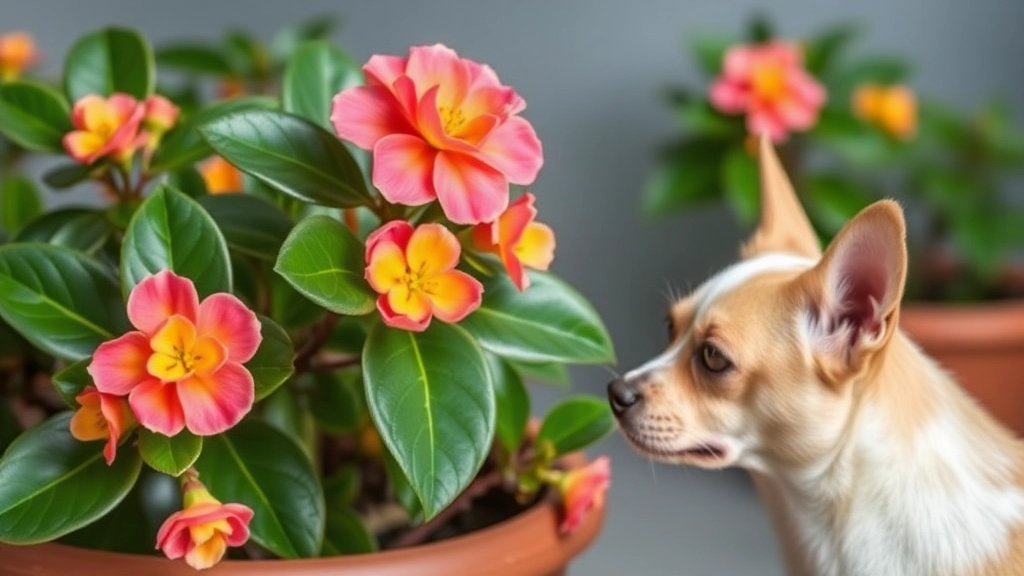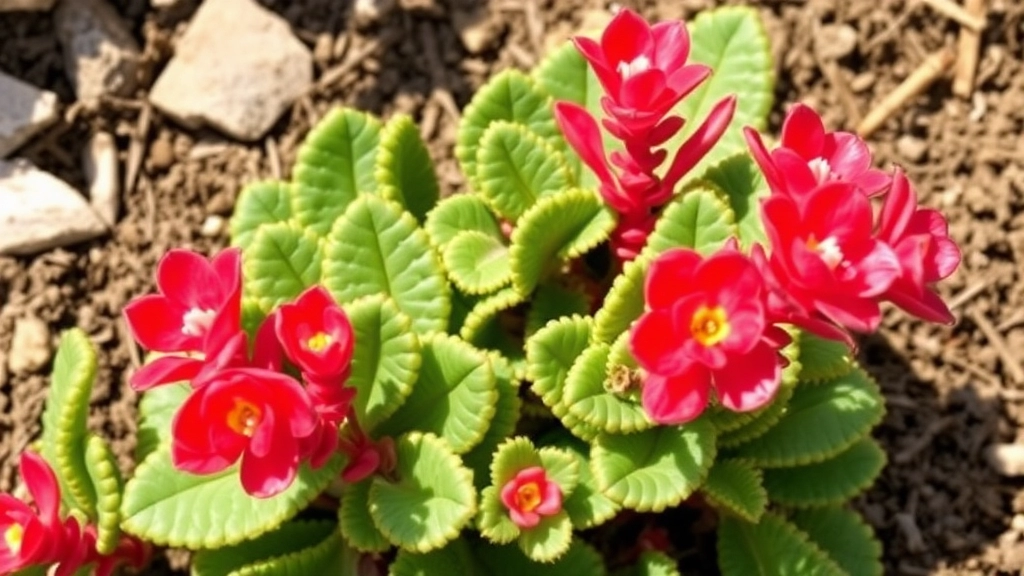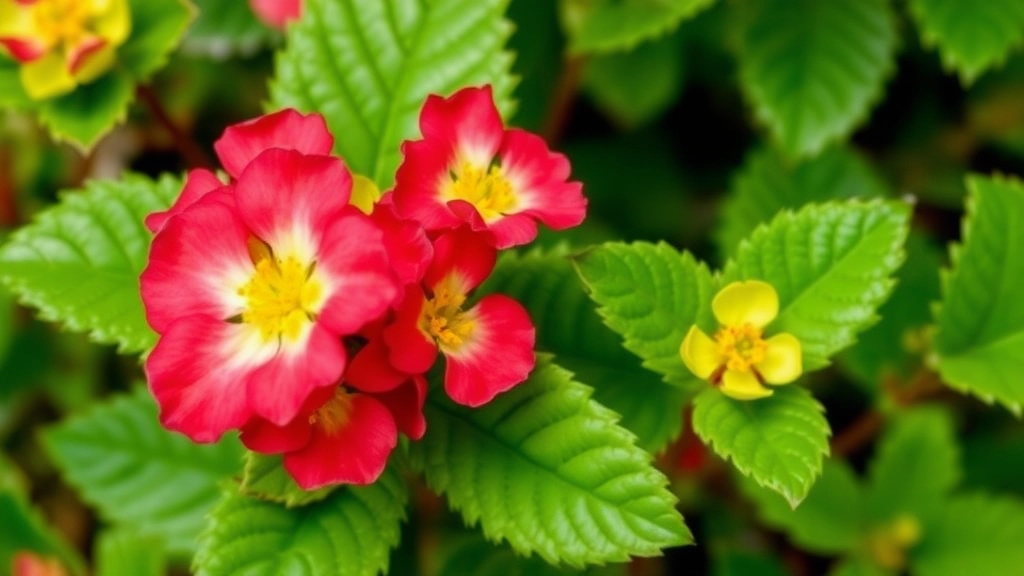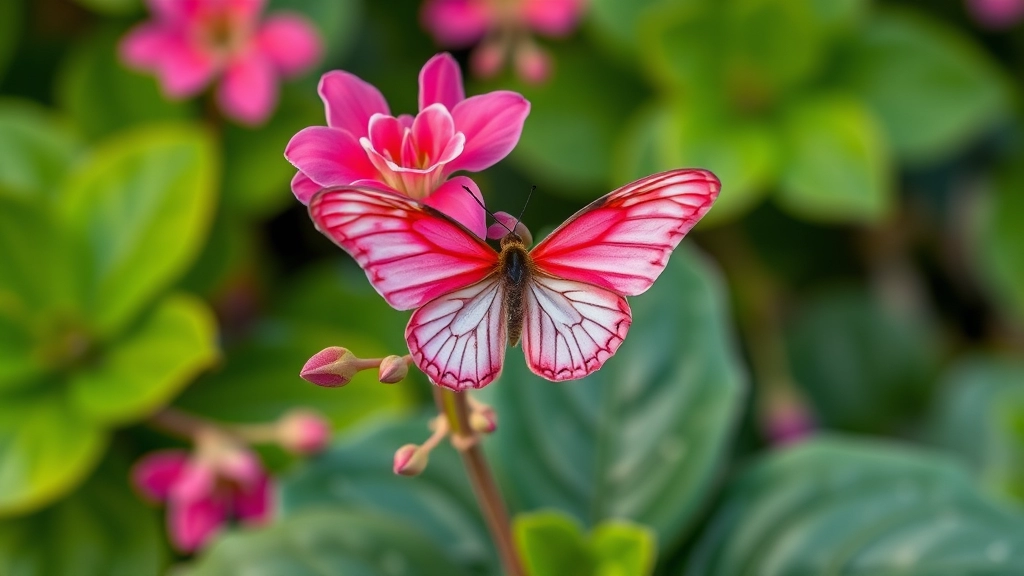Kalanchoe ‘Pink Butterflies’ and Toxicity
Have you ever wondered if the beautiful Kalanchoe ‘Pink Butterflies’ is toxic? Well, you’re not alone. Many pet owners and plant enthusiasts are curious about the potential dangers this plant may pose. In this article, we’ll dive into the toxic components of Kalanchoe ‘Pink Butterflies’ and explore how it can affect both humans and animals, especially our beloved pets.
Understanding Kalanchoe Poisoning
Understanding the symptoms of Kalanchoe poisoning is crucial for keeping your household safe. From identifying early signs in pets to knowing what reactions humans might experience, we’ve got you covered. We’ll also provide tips on safe handling and alternative non-toxic plants, so you can enjoy your indoor garden worry-free.
Key Toxic Components
- Bufadienolides:
- These are cardiac glycosides found in Kalanchoe.
- They can disrupt heart function, leading to arrhythmias.
- Calcium Oxalate Crystals:
- Present in the leaves, these can cause irritation when ingested.
- Symptoms may include oral irritation and difficulty swallowing.
- Saponins:
- These compounds can cause gastrointestinal upset.
- Pets may experience vomiting or diarrhea after ingestion.
Understanding these toxic components is crucial for ensuring the safety of our pets and families. For more detailed information on how to protect your pets, check out our guide on Kalanchoe toxicity and pet safety. Additionally, if you’re interested in learning how to care for the beautiful yet potentially hazardous Kalanchoe ‘Pink Butterflies’, our step-by-step propagation guide can be very helpful.
Symptoms of Kalanchoe Poisoning in Pets

So, you’ve got a lovely Kalanchoe ‘Pink Butterflies’ plant at home, but are you worried about your furry friends? It’s totally valid to be concerned. Kalanchoe is known to be toxic to pets, and recognising the symptoms of poisoning can be a game-changer for their health.
Common Symptoms to Watch For
If your pet has nibbled on your Kalanchoe, keep an eye out for these tell-tale signs:
- Vomiting: This is often the first sign. If your pet is throwing up, it could be a reaction to the plant.
- Diarrhoea: Loose stools can also signal distress in their digestive system.
- Lethargy: If your usually playful pet seems unusually tired or inactive, it’s worth checking in on them.
- Drooling: Excessive drooling can indicate nausea or discomfort.
- Changes in Heart Rate: Some pets may exhibit an increased heart rate, which can be serious.
- Abdominal Pain: If your pet seems to be in discomfort or is reluctant to be touched, this could be a sign.
What to Do If You Notice Symptoms
If you spot any of these symptoms, don’t panic. Here’s what you can do:
- Remove Access: Make sure your pet can’t get to the Kalanchoe anymore.
- Contact Your Vet: It’s always best to consult a professional if you’re worried about your pet’s health.
- Monitor Their Condition: Keep a close eye on them for any changes.
Human Reactions to Kalanchoe ‘Pink Butterflies’
When it comes to the Kalanchoe ‘Pink Butterflies’, many people are unaware of the potential health risks associated with this seemingly innocent plant.
What Should You Be Aware Of?
Kalanchoe contains compounds known as bufadienolides, which can lead to adverse reactions in humans. While it may look beautiful in your home, it’s essential to understand its effects.
Common Symptoms of Poisoning:
- Nausea and Vomiting: If ingested, you might experience an upset stomach.
- Diarrhoea: Another common reaction following ingestion.
- Abdominal Pain: Discomfort may arise as your body reacts.
- Heart Issues: In severe cases, irregular heartbeats can occur.
These symptoms can vary depending on the amount consumed and individual sensitivity.
What Should You Do?
If you suspect you’ve ingested Kalanchoe, seek medical attention immediately. It’s crucial to inform healthcare professionals about the specific plant involved for appropriate treatment.
Preventive Measures:
- Keep Out of Reach: Ensure that the plant is placed where children cannot access it.
- Educate Others: Make sure family members understand the risks associated with Kalanchoe.
Understanding the potential reactions in humans is vital for ensuring safety in households with this plant. For more detailed care tips, you can refer to the Complete Care Guide for Pink Butterflies Kalanchoe. Additionally, if you’re interested in propagation, check out the Step-by-Step Guide on How to Propagate Kalanchoe Pink Butterflies.
Why Kalanchoe Is Dangerous to Livestock

As we delve deeper into the risks associated with Kalanchoe ‘Pink Butterflies’, it’s crucial to understand its impact not just on pets and humans but also on livestock.
Kalanchoe species, including ‘Pink Butterflies’, contain toxic compounds known as bufadienolides.
These compounds can lead to serious health issues in livestock, particularly in animals like cattle, sheep, and goats.
Key Reasons Kalanchoe Is Dangerous to Livestock:
- Cardiotoxic Effects: The bufadienolides can disrupt heart function, leading to arrhythmias and potentially fatal outcomes.
- Gastrointestinal Distress: Ingestion may cause vomiting, diarrhea, and abdominal pain, which can severely affect an animal’s health.
- Neurological Symptoms: Livestock may experience lethargy, tremors, or even seizures after consuming Kalanchoe.
- High Palatability: Livestock often find the leaves appealing, increasing the risk of accidental ingestion.
Real-Life Example:
A farmer once reported losing several goats after they grazed on a patch of Kalanchoe that had inadvertently spread into their pasture. The goats exhibited severe gastrointestinal distress and were ultimately unable to recover.
Given these dangers, it’s essential for livestock owners to be vigilant about the presence of Kalanchoe in grazing areas. Taking proactive measures can save animals from unnecessary suffering and potential loss.
Safe Handling and Care Tips for Kalanchoe ‘Pink Butterflies’
When it comes to Kalanchoe ‘Pink Butterflies’, many pet owners worry about its toxicity.
To keep your home safe while enjoying the beauty of this plant, consider the following tips for safe handling and care:
- Placement Matters:
- Position your Kalanchoe out of reach of pets and children.
- A high shelf or a hanging planter can be effective.
- Educate Everyone:
- Inform family members about the plant’s toxicity.
- Make sure they understand the importance of not allowing pets to nibble on it.
- Regular Maintenance:
- Keep the plant healthy by watering it properly and ensuring it receives adequate sunlight.
- A healthy plant is less likely to attract curious pets.
- Avoid Overwatering:
- Kalanchoe prefers well-drained soil.
- Overwatering can lead to root rot, making the plant less resilient.
- Monitor Your Pets:
- Keep an eye on your pets when they are near the plant.
- If you notice any unusual behaviour, consult a veterinarian.
- Consider Alternatives:
- If you have particularly curious pets, think about choosing non-toxic plants instead.
- This can reduce worries about accidental ingestion.
By following these simple yet effective tips, you can enjoy Kalanchoe ‘Pink Butterflies’ without compromising the safety of your pets. For more details, check out our toxicity and safety tips and learn about the care and propagation tips for Kalanchoe ‘Pink Butterflies’.
Treatment and Prevention of Kalanchoe Poisoning

So, you’ve got a Kalanchoe ‘Pink Butterflies’ at home, and you’re worried about the potential poisoning risks for your furry friends or even the kids. It’s a valid concern, and knowing how to deal with it can make all the difference.
Immediate Actions for Poisoning
If you suspect that your pet has ingested any part of the Kalanchoe plant, here’s what you should do:
- Stay Calm: Your pet will pick up on your anxiety. Take a deep breath.
- Contact Your Vet: This is the first step. They can give you tailored advice based on your pet’s size and health.
- Don’t Induce Vomiting: Unless your vet says so, inducing vomiting can sometimes make things worse.
- Gather Information: Note down what your pet ate, how much, and any symptoms you’ve observed. This will help the vet assess the situation better.
Prevention Tips
Now, let’s talk about keeping your pets safe from Kalanchoe poisoning in the first place:
- Placement: Keep your Kalanchoe out of reach. High shelves or hanging baskets are great options.
- Educate Everyone: Make sure everyone in your household knows that Kalanchoe is off-limits.
- Alternative Plants: Consider swapping out Kalanchoe for non-toxic plants if you have pets that are prone to nibbling on greenery.
Regular Monitoring
It’s also a good idea to regularly check your plants and pets:
- Inspect Plants: Look for any signs of wilting or decay that might attract pets.
- Watch Pet Behaviour: Keep an eye on your pets’ habits. If they start showing unusual interest in your plants, it might be time to rethink your plant choices.
By taking these steps, you can help prevent any unfortunate incidents while enjoying the beauty of your Kalanchoe ‘Pink Butterflies’.
Alternative Non-Toxic Plants for Households with Pets
As we consider the risks associated with Kalanchoe ‘Pink Butterflies’, it’s essential to explore safer options for our homes.
Many pet owners worry about the safety of their plants, especially when curious pets are involved.
Here are some fantastic non-toxic plants to consider:
1. Spider Plant (Chlorophytum comosum)
- Hardy and resilient: Thrives in various light conditions.
- Air purifier: Helps improve indoor air quality.
- Pet-friendly: Safe for cats and dogs if ingested.
2. Boston Fern (Nephrolepis exaltata)
- Lush foliage: Adds a vibrant touch to your space.
- Humidity lover: Prefers moist environments, making it perfect for bathrooms.
- Non-toxic: Safe around pets.
3. Areca Palm (Dypsis lutescens)
- Tropical vibe: Brings a touch of the tropics indoors.
- Air quality enhancer: Known for its air-purifying properties.
- Pet-safe: Non-toxic to cats and dogs.
4. Bamboo Palm (Chamaedorea seifrizii)
- Low maintenance: Ideal for busy households.
- Natural humidifier: Helps maintain moisture in the air.
- Safe for pets: Non-toxic and easy to care for.
5. Calathea (Calathea spp.)
- Stunning patterns: Beautiful leaves that can brighten any room.
- Easy care: Prefers indirect light and humidity.
- Pet-friendly: Safe for both cats and dogs.
Choosing non-toxic plants not only ensures the safety of your pets but also enhances your living space. However, if you already have Kalanchoe, it’s important to be aware of the safety tips and risks associated with it. Additionally, for those who enjoy the beauty of Kalanchoe, understanding post-flowering care tips can help maintain their health and vibrancy.
FAQs About Kalanchoe ‘Pink Butterflies’ and Its Toxicity
What is Kalanchoe ‘Pink Butterflies’?
Kalanchoe ‘Pink Butterflies’ is a popular ornamental plant known for its attractive pink-hued leaves. However, it is important to note that this plant is toxic to both pets and livestock.
Why is Kalanchoe ‘Pink Butterflies’ toxic?
Kalanchoe species, including ‘Pink Butterflies’, contain toxic compounds known as bufadienolides. These compounds can cause serious health issues in animals and humans if ingested.
What symptoms should I watch for if my pet ingests Kalanchoe?
If your pet has nibbled on Kalanchoe, watch for symptoms such as vomiting, diarrhea, lethargy, drooling, changes in heart rate, and abdominal pain. These signs indicate potential poisoning and require immediate attention.
What should I do if I suspect my pet has ingested Kalanchoe?
If you suspect your pet has ingested Kalanchoe, follow these steps:
- Remove Access: Ensure your pet cannot reach the plant.
- Contact Your Vet: Seek professional advice immediately.
- Monitor Their Condition: Keep a close eye on your pet for any changes in their health.
Is Kalanchoe ‘Pink Butterflies’ dangerous to livestock?
Yes, Kalanchoe ‘Pink Butterflies’ is dangerous to livestock. The bufadienolides can cause cardiotoxic effects, gastrointestinal distress, and neurological symptoms in animals like cattle, sheep, and goats.
Can Kalanchoe poisoning be fatal for livestock?
Yes, Kalanchoe poisoning can be fatal for livestock. The cardiotoxic effects can disrupt heart function, leading to potentially fatal outcomes.
How can I prevent Kalanchoe poisoning in pets?
To prevent Kalanchoe poisoning in pets, consider the following tips:
- Placement: Keep the plant out of reach, such as on high shelves or in hanging baskets.
- Educate Everyone: Inform all household members about the plant’s toxicity.
- Alternative Plants: Opt for non-toxic plants if you have pets prone to nibbling on greenery.
What immediate actions should I take if my pet ingests Kalanchoe?
If your pet ingests Kalanchoe, take these immediate actions:
- Stay Calm: Your pet will sense your anxiety.
- Contact Your Vet: Get professional advice tailored to your pet’s situation.
- Don’t Induce Vomiting: Only do so if advised by your vet.
- Gather Information: Note what your pet ate, how much, and any symptoms observed.
How can I monitor my pets and plants to prevent poisoning?
Regular monitoring is crucial:
- Inspect Plants: Check for signs of wilting or decay that might attract pets.
- Watch Pet Behaviour: Observe your pets’ habits and intervene if they show interest in your plants.
By taking these preventative measures, you can enjoy the beauty of your Kalanchoe ‘Pink Butterflies’ while ensuring the safety of your pets and livestock.
